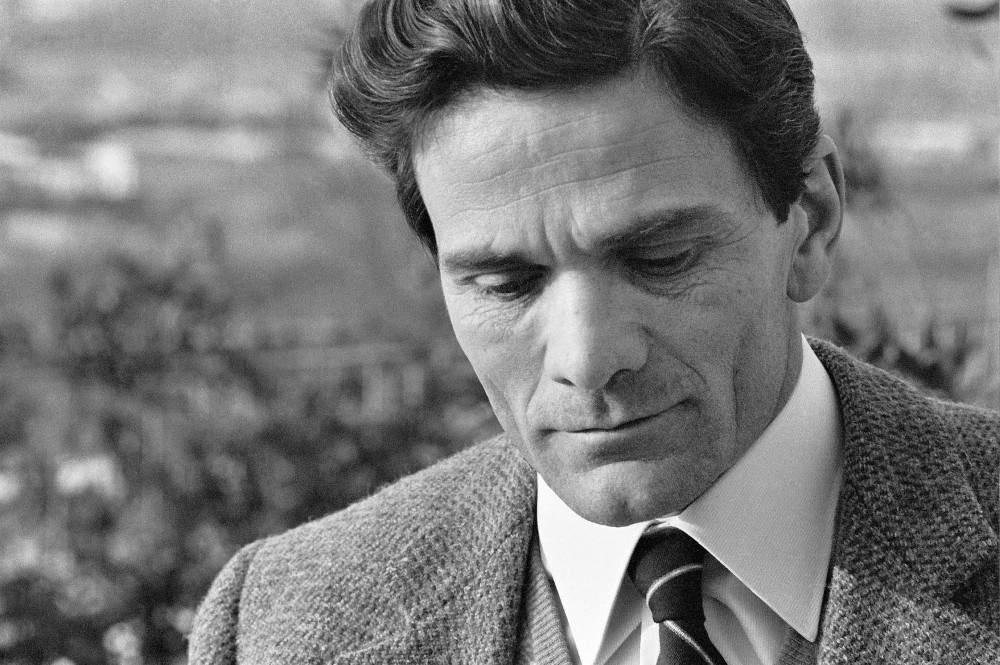From September 24, 2022 to January 8, 2023 Villa Manin di Passariano di Codroipo (Udine), Cinemazero (Pordenone) and the Pier Paolo Pasolini Study Center of Casarsa della Delizia (Pordenone) present the exhibition Pier Paolo Pasolini. Under the eyes of the world, curated by Silvia Martín Gutiérrez, promoted by ERPAC - Ente Regionale per il Patrimonio Culturale del Friuli Venezia Giulia, on the occasion of the centenary of Pier Paolo Pasolini’s birth.
More than 170 unpublished and rare portraits of the well-known Italian artist, poet, writer, intellectual and director will be on display. Entire photo shoots taken by great foreign photographers (including Richard Avedon, Herbert List, Henri Cartier-Bresson, Jerry Bauer, Jonas Mekas, Lütfi Özkök, Erika Rabau, Duane Michals, Philippe Koudjina, Marli Shamir and many others), which restore the image of man and artist in the world through the places, moments and encounters that marked Pasolini’s life.
Pier Paolo Pasolini was probably the most photographed artist of the 20th century. From the early 1950s, when he arrived in Rome, until the days before his death, he was captured in hundreds of situations, both public and private.
Pier Paolo Pasolini placed at the center of his work the places where the rules of the Western bourgeois world do not dominate: Friuli, the suburbs of Rome and the South, unexplored continents, the great modern cities, from Paris to New York. And the photographers portrayed him in precisely these places. Each photographer emphasized different aspects of Pasolini: a writer who shows himself in elegant bourgeois clothes but also in a tank top and bathing suit, a face that sometimes seems to smile but also looks fiercely at the world, as if to challenge it.
The exhibition, which was created with the important contribution of Cinemazero, is the result of a research project conducted for many years in archives around the world by the curator, and developed for the occasion together with Marco Bazzocchi and Riccardo Costantini, with an exceptional scientific committee. Thanks to this research activity, the public will be able to see for the first time some completely unpublished photographic reports: Pasolini’s meeting with Man Ray to propose him to draw the poster of Salò; Pasolini in Stockholm (a few days before he was killed), to make himself known in the Nobel Prize environment; Pasolini in the Souths of the world, with Alberto Moravia, Dacia Maraini, Maria Callas. When Pasolini goes in search of otherness, of anomaly, which he then reconstructs on the sets of his films. Or at film festivals and other occasions, where he meets and confronts intellectuals and filmmakers such as Orson Welles, Agnès Varda, Jonas Mekas, Jean-Luc Godard.
The exhibition aims to tell with photographs and numerous multimedia materials that Pasolini’s shots can never construct a logical, coherent whole. The exhibition at Villa Manin, with the complementary sections of the Pier Paolo Pasolini Study Center of Casarsa della Delizia, aims to propose different nuclei made up of photographic reports that only in appearance seem to follow a development but in reality show how any chronological definition of that moment or period is impossible. Nuclei that expose “micro worlds” (a house, a trip, a festival, a social occasion...) that become “macro” in witnessing her traversing history and the society in which she lives. In Trastevere in 1953, in Paris in 1961, in New York in 1966 and again in 1969, in Berlin during the festival, in Stockholm a few days before he was killed.
In addition to the photographs, the exhibition presents other documents such as newspapers, statements, interviews, and videos to contextualize the occasions when the photo shoots originated. And then it makes Pasolini’s voice heard, with unpublished audio sequences, as an additional tool to make present, or attempt to make present, an author who is always “on the run”: on the run from himself, on the run from the world, on the run through the words and images of his writings and films.
A tour of Pasolini’s Roman homes will be presented at the Pier Paolo Pasolini Study Center. From April 1954 to June 1959 the poet lived with his mother in the house at Via Fonteiana 86, in the Monteverde neighborhood. He later moved to the apartment at Via Giacinto Carini 45, from which he moved in 1963 to finally settle in the house at Via Eufrate, 9 in the EUR district. These changes are evidenced by the shots presented in Casarsa. The photographers documenting the houses on Via Fonteiana and Via Carlini (Marisa Rastellini, Elio Sorci and Pietro Pascuttini) allow us to enterthe poet’s studio and observe him at his typewriter, surrounded by letters, documents, film scripts. We see the paintings on the walls and, in one case, the organza curtains at the window overlooking a small terrace. A few years later, the house on Euphrates Street furnished with nineteenth-century furniture on which we notice exotic knick-knacks reminiscent of trips to Africa or India, velvet sofas, carpets, is the backdrop for a Jerry Bauer service, among the most interesting to learn about the intimacy of the poet, immortalized with his mother and close friends.
For more info: www.villamanin.it; www.centrostudipierpaolopasolinicasarsa.it
Image: Pier Paolo Pasolini in the house on Via Eufrate, Rome, 1963 © Gideon Bachmann/Cinemazero
 |
| More than 170 previously unpublished portraits of Pasolini on display in Friuli to mark the centenary of his birth |
Warning: the translation into English of the original Italian article was created using automatic tools. We undertake to review all articles, but we do not guarantee the total absence of inaccuracies in the translation due to the program. You can find the original by clicking on the ITA button. If you find any mistake,please contact us.